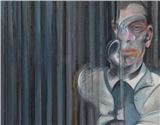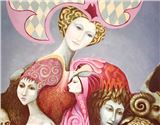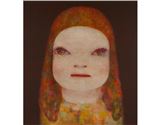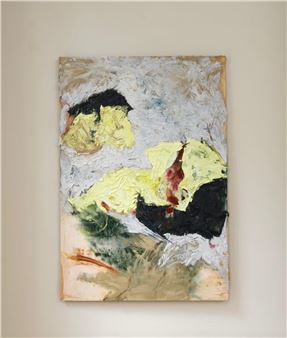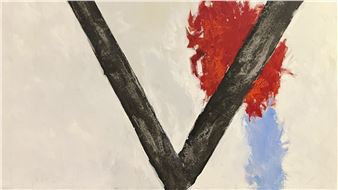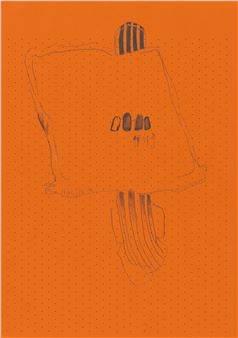Promises to Keep
Promises to Keep examines the close relationship between self-portraiture and performance in the construction and (re)presentation of "identity." Exploring the use of the artistŌĆÖs body in the self-representational acts of twelve female artists from Pakistan, the exhibition looks at how self-parody, activism, nationalism, popular culture, and feminism cross paths. Originally it was a document that was written in 2010 as my masterŌĆÖs dissertation at SAIC. Those two years of living in the US as a Pakistani-Muslim-Woman-Artist informed much of my artistic and scholarly practice. Because of an identity inscribed on my body and in my accent, my conversations with a random person in Chicago would begin with the question "Where are you from?" And my answer would involuntarily start an often superficial discussion on terrorism, extremism, Islam, and treatment of women. "DonŌĆÖt you feel liberated now?" was a question I was often asked towards the end. Those exchanges left me invariably dissatisfied in my attempts to defy easy categorizations and I began to ponder over:
- the production of an image of identity.
- our responsibility to those with whom we share a certain identity.
- how we perform or represent these identities in our everyday lives.
These interests came together in my writing on performance art practice from Pakistan. I discovered that almost all of the works that employ performance as a medium for making art are made by female artists and are preoccupied with addressing the issues around the construction and (re)presentation of identity or identities. Each performance is an act of self-representation that plays out a dislocated and a fragmented self. Each performance aims to redefine identity/image-of-an-identity and addresses cultural stereotypes that manipulate the roles we play. Each performance reveals the conception of the "self" as an imaginary construct. Each addresses the body as a hybrid between the political and the private. Through employing a language that is easily relatable to the common language of the streets, these works aim to dissolve the distinctions between high art and low art. Consequently they minimize the gap between Art and everyday-life by borrowing the language of the later. The works reflect on memory, negotiate the past, engage aspects of lived experiences, and critique cultural norms and narratives. They investigate the subject of embodiment and the embodiment of subjectivity in an understanding of the self as both "subject" and "object."
The document produced in 2010 included five or six such examples. And now, after seven years, because the subject of "performing an identityŌĆÖŌĆÖ continues to inform my everyday life and my practice, that dissertation has taken the shape of this curatorial project under the same name. For this exhibition I dug out more works. I wasnŌĆÖt surprised to discover that there is a plethora of works produced by artists from Pakistan that explore the relationship between self-portraiture and performance from many different perspectives. And still, the majority of the artists are women. What you see in this exhibition is only one possible configuration of works that addresses this subject. In this exhibition I have included fourteen works by twelve female artists who span three generations. In what follows I will very briefly talk about how memory, history, gender, and socio-political/cultural constructs co-exist within the same space when performing these self-portraits.

Recommended for you
Promises to Keep examines the close relationship between self-portraiture and performance in the construction and (re)presentation of "identity." Exploring the use of the artistŌĆÖs body in the self-representational acts of twelve female artists from Pakistan, the exhibition looks at how self-parody, activism, nationalism, popular culture, and feminism cross paths. Originally it was a document that was written in 2010 as my masterŌĆÖs dissertation at SAIC. Those two years of living in the US as a Pakistani-Muslim-Woman-Artist informed much of my artistic and scholarly practice. Because of an identity inscribed on my body and in my accent, my conversations with a random person in Chicago would begin with the question "Where are you from?" And my answer would involuntarily start an often superficial discussion on terrorism, extremism, Islam, and treatment of women. "DonŌĆÖt you feel liberated now?" was a question I was often asked towards the end. Those exchanges left me invariably dissatisfied in my attempts to defy easy categorizations and I began to ponder over:
- the production of an image of identity.
- our responsibility to those with whom we share a certain identity.
- how we perform or represent these identities in our everyday lives.
These interests came together in my writing on performance art practice from Pakistan. I discovered that almost all of the works that employ performance as a medium for making art are made by female artists and are preoccupied with addressing the issues around the construction and (re)presentation of identity or identities. Each performance is an act of self-representation that plays out a dislocated and a fragmented self. Each performance aims to redefine identity/image-of-an-identity and addresses cultural stereotypes that manipulate the roles we play. Each performance reveals the conception of the "self" as an imaginary construct. Each addresses the body as a hybrid between the political and the private. Through employing a language that is easily relatable to the common language of the streets, these works aim to dissolve the distinctions between high art and low art. Consequently they minimize the gap between Art and everyday-life by borrowing the language of the later. The works reflect on memory, negotiate the past, engage aspects of lived experiences, and critique cultural norms and narratives. They investigate the subject of embodiment and the embodiment of subjectivity in an understanding of the self as both "subject" and "object."
The document produced in 2010 included five or six such examples. And now, after seven years, because the subject of "performing an identityŌĆÖŌĆÖ continues to inform my everyday life and my practice, that dissertation has taken the shape of this curatorial project under the same name. For this exhibition I dug out more works. I wasnŌĆÖt surprised to discover that there is a plethora of works produced by artists from Pakistan that explore the relationship between self-portraiture and performance from many different perspectives. And still, the majority of the artists are women. What you see in this exhibition is only one possible configuration of works that addresses this subject. In this exhibition I have included fourteen works by twelve female artists who span three generations. In what follows I will very briefly talk about how memory, history, gender, and socio-political/cultural constructs co-exist within the same space when performing these self-portraits.
Contact details


 ARTISTS
ARTISTS
